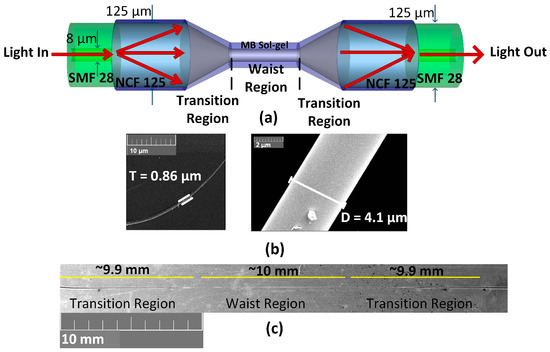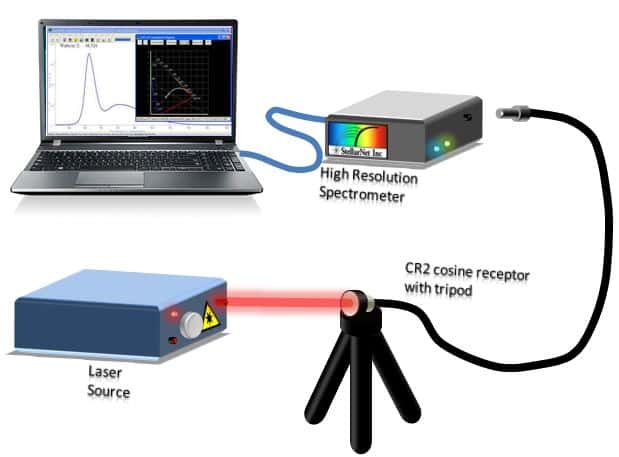The Future of Fibre Optics: Why the Optical Fibre Diameter Analyser is Key to Advancements
Just How an Optical Fibre Diameter Analyser Enhances Quality Assurance in Fibre Manufacturing
The assimilation of an Optical Fibre Diameter Analyser right into Fibre production procedures stands for a considerable innovation in high quality control techniques. By offering real-time, exact measurements of Fibre sizes, this modern technology deals with the important need for consistency in production criteria.

Significance of Fibre Diameter Measurement
Precise dimension of Fibre Diameter is crucial in the field of optical Fibre technology, as it straight affects the efficiency and integrity of Fibre optic systems. The Diameter of an optical Fibre impacts its light-carrying ability, depletion, and total transmission performance. Accuracy in determining Fibre Diameter guarantees that the optical residential properties are kept within defined resistances, which is crucial for ideal signal stability.
Variations in Fibre Diameter can cause boosted losses because of scattering and modal dispersion, influencing the top quality of information transmission. In high-speed communication systems, such discrepancies can result in substantial destruction of signal high quality, resulting in data mistakes and minimized performance. Constant Fibre Diameter is vital for compatibility with connectors and splicing modern technologies, which are important parts of Fibre optic networks.
Quality assurance processes in Fibre manufacturing heavily count on precise Diameter dimensions to guarantee compliance with market standards. By applying durable measurement methods, producers can boost product integrity, reduce waste, and improve general system performance. Therefore, the importance of Fibre Diameter dimension can not be overstated, as it works as a foundation in the advancement of optical Fibre technology and its applications in contemporary communication networks.
Exactly How the Analyser Works
The reliable measurement of Fibre Diameter counts on sophisticated logical methods that guarantee accuracy and dependability in optical Fibre manufacturing (optical fibre diameter analyser). The Optical Fibre Diameter Analyser employs a combination of laser technology and advanced picture handling algorithms to precisely analyze the Diameter of fibers as they are generated
Initially, a laser beam of light is routed at the moving Fibre, producing a cross-sectional darkness. The analyser captures this shadow utilizing high-resolution electronic cameras positioned tactically along the manufacturing line. The captured images are then refined in real-time to establish the Fibre's Diameter with extraordinary precision.
The system makes use of sophisticated algorithms that represent different aspects, consisting of variants in light strength and ecological conditions, to enhance measurement reliability. It can discover minute modifications in Diameter, such as changes that could take place throughout the production procedure.
Furthermore, the analyser can dealing with several fibres concurrently, boosting throughput without jeopardizing accuracy. By providing instantaneous feedback on the Diameter, the Optical Fibre Diameter Analyser plays an essential role in keeping rigorous quality assurance requirements, guaranteeing that the end product fulfills market specifications and customer needs.
Benefits of Real-Time Monitoring
While traditional approaches of keeping an eye on Fibre Diameter usually include time-consuming post-production checks, real-time surveillance dramatically improves the efficiency and top quality of optical Fibre production. optical fibre diameter analyser. This positive method permits makers to identify inconsistencies in Fibre Diameter as they happen, instead than waiting up until production is total to assess top quality
By continuously gauging the Diameter throughout production, suppliers can guarantee that the fibers meet rigorous specs, bring about decreased irregularity and improved uniformity. Real-time monitoring additionally allows prompt corrective activities to be taken, minimizing waste and stopping malfunctioning fibres from going into the supply chain.
Furthermore, this innovation promotes enhanced information collection and evaluation, offering understandings right into production patterns and possible areas for enhancement. Such data-driven decision-making encourages manufacturers to enhance procedures and keep high visit the site standards of high quality control.
Furthermore, real-time surveillance fosters a culture of constant renovation within the manufacturing environment. Employees are a lot more involved when they can see the influence of their operate in real-time, leading to increased liability and a commitment to quality. On the whole, the application of real-time surveillance systems in optical Fibre production translates to exceptional product high quality and boosted client satisfaction.
Effect On Production Efficiency
Executing optical Fibre Diameter analysers considerably enhances production efficiency by streamlining the manufacturing process. These tools facilitate continual surveillance of Fibre Diameter, enabling producers to discover variances in real-time. By determining disparities quickly, production lines can be adjusted promptly, decreasing downtime and lowering the probability of creating faulty products.
Furthermore, the assimilation of these analysers right into the production workflow makes it possible for much better resource allocation. With exact Diameter measurements, drivers can enhance material use, making sure that resources are not wasted on mistaken fibres. This accuracy likewise adds to much less remodel and scrap, eventually lowering manufacturing expenses.
The automation provided by optical Fibre Diameter analysers lowers reliance on hand-operated assessments, which are prone and commonly lengthy to human mistake. Because of this, staff members can concentrate on even more tactical jobs, enhancing total productivity.
In addition, the data created from these analysers can inform procedure improvements and assist in browse around this web-site far better decision-making. By evaluating fads in Fibre Diameter variants, manufacturers can carry out proactive steps to boost production methods and keep consistent high quality. In recap, optical Fibre Diameter analysers play an important role in increasing manufacturing performance, resulting in better output and enhanced earnings.
Instance Studies and Success Stories
Across different fields, case research studies highlight the transformative effect of optical Fibre Diameter analysers on manufacturing processes. One popular example is a leading telecoms business that encountered challenges with inconsistent Fibre diameters, resulting in boosted denial prices. By incorporating an optical Fibre Diameter analyser, the business attained real-time surveillance of Fibre measurements, leading to a 30% decrease in issues and significant cost savings.

Moreover, a research study institution concentrating on sophisticated materials utilized optical Fibre Diameter analysers to improve their experimental processes. The analyser's capacity to provide thorough insights right into Fibre consistency made it possible for the development of cutting-edge products with improved performance attributes.
These success stories highlight the crucial duty of optical Fibre Diameter analysers in boosting quality assurance, enhancing manufacturing efficiency, and driving development across diverse markets.
Verdict
In conclusion, the Optical Fibre Diameter Analyser plays a pivotal role in enhancing high quality control within Fibre production. As demonstrated through various situation research studies, the analyser shows vital for accomplishing remarkable item high quality in Fibre manufacturing.

The execution of optical Fibre Diameter analysers enabled for stringent top quality control, guaranteeing that the generated fibres fulfilled exacting market standards.In final thought, the Optical Fibre Diameter Analyser plays a crucial function in boosting high quality control within Fibre production.